Quick Summary:
API testing has focused chiefly on message layer testing, which covers REST APIs and SOAP Web services that can be sent through HTTP, HTTPS, JMS, and MQ. This is now an essential part of any Automation Testing. APIs are used in some way in almost every application nowadays. Before releasing a product to a client or end-user, APIs must be adequately tested as a form of communication. Some testers skip over this stage and go right towards UI testing.
API is an abbreviation for “application programming interface.” API is the layer that sits between the presentation and database layers in application development. API’s primary purpose is to allow communication and data transfer between systems.
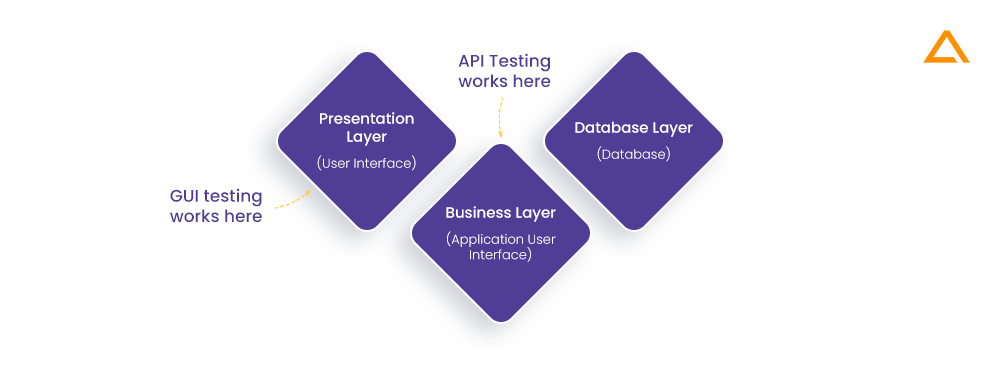
API testing is a sort of software testing that is impossible due to the lack of a graphical user interface. API testing focuses on the message layer, including REST API and SOAP services that can be sent over HTTP, JMS, HTTPS, and MQ. This is now a necessary part of any automation testing.
API testing can’t be done manually because it necessitates using specific code. As a result, some API testing tools are required. Types of API testing, how to test API, API testing tools, and API testing best practices are all covered in this article. Let’s start with an overview of API testing before diving into it.
What is API Testing?
Sending API requests, generating output, validating system output, and validating system response against established input parameters, such as information and data format accuracy, HTTP code, and error codes, are all QA testing actions. The API type determines the method used to test APIs.
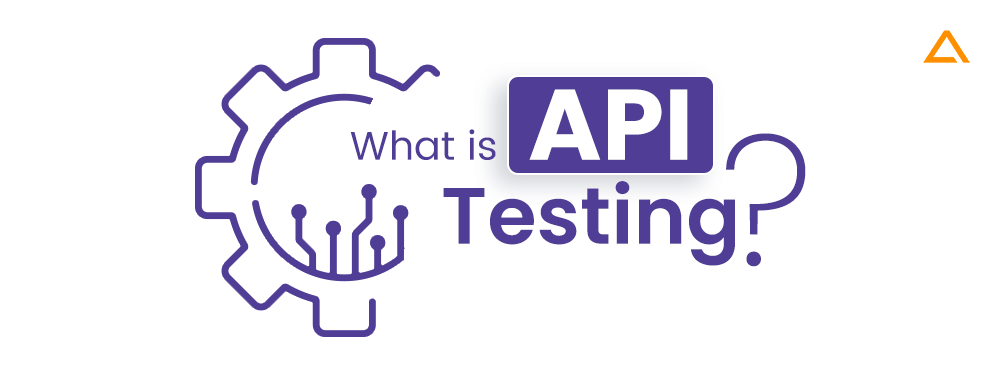
Web APIs, also known as web services, are remote APIs that allow you to access resources that are not on the same device as you are using. Database APIs are also included, which link the application to the database management system.
Why API Testing is Important?
The testing pyramid is a concept that aids developers and QA testers in ensuring improved product quality, minimizing the time it takes to identify the root cause of user concerns, and assisting in developing a more reliable test suite. The essential layers, from top to bottom, are:
- Manual Test
- UI Testing
- Integration Testing
- Unit Tests
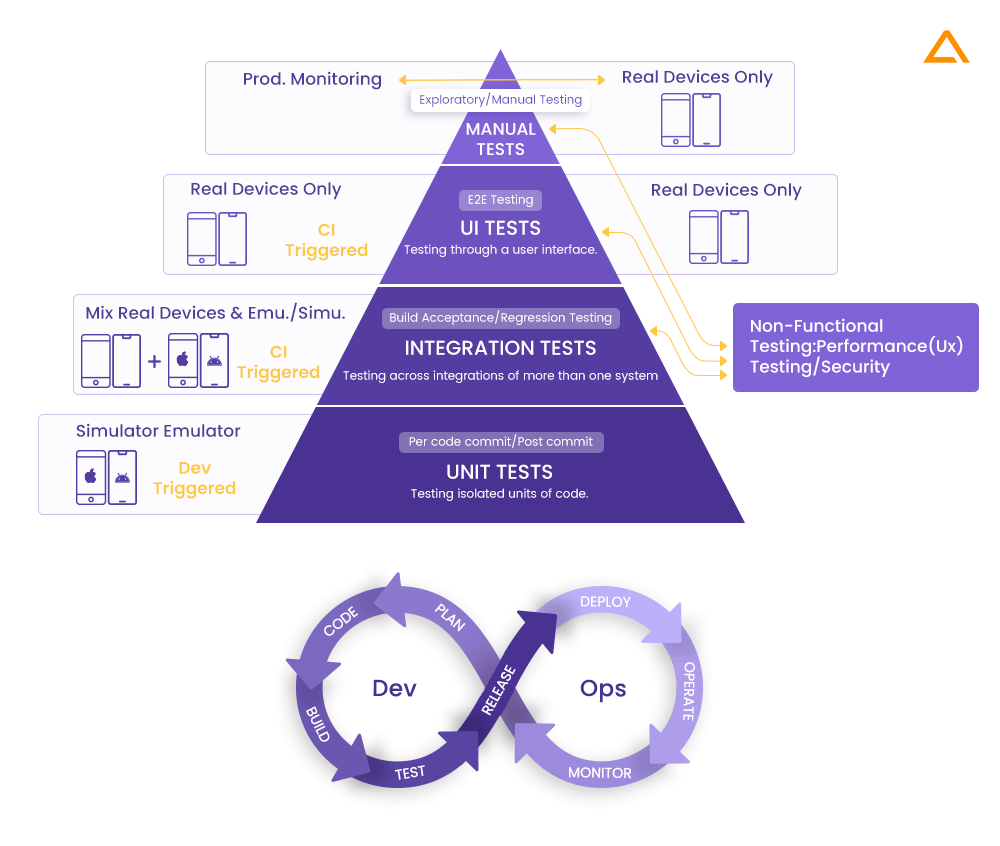
The lower tier of the structure is more automated, making testing go faster. The summit of the pyramid, on the other hand, is slower because manual testing scenarios primarily do it.
To put it another way, there should be a lot of discrete unit testing scenarios rather than a lot of manual and time-consuming end-to-end explanatory tests. Unlike faults detected far later in the process, frontloading testing at the unit level makes addressing bugs easier.
What are the types of API Testing?
QA engineers approach API testing in many ways. They examine if it generates valid outputs in the expected format, responds promptly, and interfaces well with presentation layer software. Edge cases, such as unexpected input, failures, and potential security threats, are tested by testers. Let’s take a closer look at each of them:
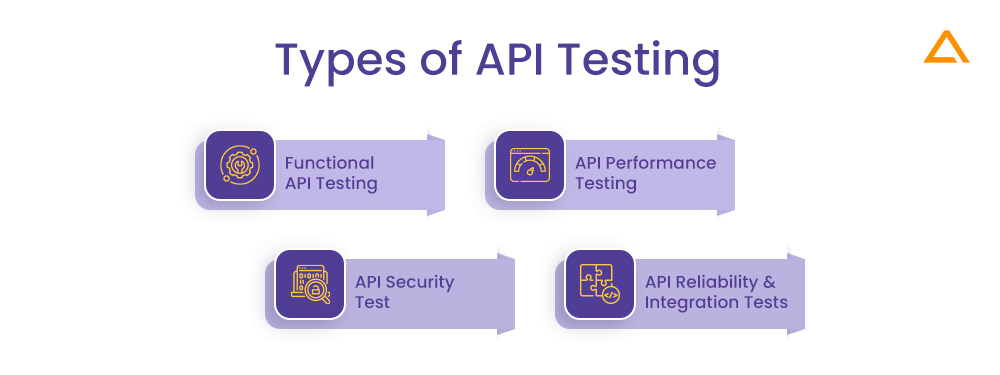
Functional API Testing
The evaluation of specific functions inside the codebase is known as functional testing. It ensures that the API operates inside the parameters specified, which means:
- For a given input, this function returns the intended result
- Errors are handled when the findings aren’t within the expected parameters
Positive and negative testing is one of the methods of functional testing. Negative testing examines how an API responds to every potential type of incorrect input, whereas positive testing verifies the API’s correct operation when the information matches the norm. The program will not run even under optimal conditions if positive test cases fail.
API Performance Testing
To verify that the API can manage higher-than-expected traffic. Quality engineers test its functionality and performance by intentionally producing or mimicking API calls. Some API performance tests are listed below:
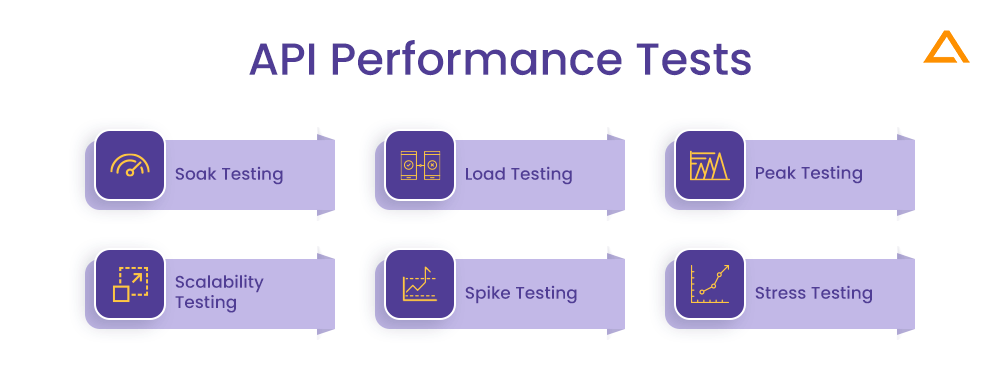
Soak Testing
This form of long-term testing can identify system flaws like API memory leaks. So that you can keep the automated soak tests going if you wish to check for any unwelcome behaviour.
Load Testing
Load testing is used to determine a system’s performance limits when subjected to a high load. That’s why we track response times, throughput, and server conditions as the number of calls increases.
Peak Testing
Equal to soak testing, you put the most stress on your API while lowering the attack time.
Scalability Testing
You’ll want to ensure that your system’s performance adapts to changing loads when you enhance the number of incoming requests. You can see if that results in an equivalent increase in response time.
Spike Testing
In contrast to stress testing, an API is subjected to a rapid surge in users. Spike testing determines whether the API can stabilize and return to regular operation following a spike.
Stress Testing
In performance testing, stress testing entails progressively increasing the number of virtual users to determine when the API begins to throw errors, slow down, or stop responding.
Also Read : REST API Development Best Practices
API Security Test
The security assessment tests determine whether an API is subject to adverse attacks. Fuzzy penetration and security testing are the components of security auditing:

Authentication Testing
This testing verifies whether or not the security standards have been met. Authentication, permissions, access control, and role-based access control are part of this process. To use the API, what kind of authentication is necessary. Following are some of the things that you need to keep in mind:
- To use the API, what kind of authentication is necessary
- Encryption of confidential data
- What kind of resource access authorization checks are in place, and so forth
Fuzz Testing
Another security test is pushing the API to its extreme boundaries, called fuzz testing. See if the API can withstand bad behavior such as crashes or overflow. It enters a vast amount of random data forcibly.
Penetration Testing
Penetrating testing some API functionality, resources, processes, or the entire API is under attack from the outside. This determines if the threat vector is reachable.
API Reliability and Integration Tests
As APIs are at the heart of integrations, the APIs must pass the following tests:

Reliability Testing
An API should be examined for possible disconnections when synchronizing the device with various instruments for reliability testing.
Integration Testing
Integration testing focuses on communication across APIs, ensuring that they are well-connected and that no bugs or other issues exist in the modules of another API.
“Build Enterprise-Grade REST APIs”
That are Secure, Easy to Consume, Well Documented & Truly Reliable
How is API Testing Performed?
API testing is performed by submitting requests to the software using the application programming interface and then checking if it returns the expected data. At the same time, automated API testing can be performed regularly. Let’s take a look at the step-by-step API testing process:
Creating API Testing Requirements
For testing the API, the boundaries and requirements should be determined first. The following types of questions should help in deciding the boundaries:
- What type of workflow your application has?
- What is the purpose and target audience of your API?
- What are your priorities while testing the API?
- What is the aspect of testing?
- What is your definition of Pass and Fail?
In other words, these questions help you determine the functional scope of the API.
Configure the API Test Environment
Once you define the functional scope of your API, the next thing you’ll do is set up an API test environment which is usually the task of DevOps developers. It requires the configuration of the servers, database, and every resource the API interacts with, depending on the software requirements.
Make an experimental API call
Before diving into the API testing, it is wise to make a dummy call to the API and ensure that API is performing correctly and there is nothing broken or API is having an issue.
Defining input parameter
Plan all possible input combinations, test cases, and later. To authenticate the results to determine if the API performs as expected.
Creating API Test cases
After completing your preparations, you can create test cases before comparing the actual outcomes to the expected ones. It’s a good idea to sort them by test category. The following are a few examples of API test cases:
- Input conditions are used to test the value
- Examining the API’s functionality in a system where the response has no return value
- The output is being monitored for any interruptions
- Validating the impact of changes in data structure
- Validating resources that have been changed as a result of the API request
How To Select The Correct API Testing Tools?
There are many API testing tools on the market, and picking the correct one might be challenging. As a result, some of the most important considerations to make while choosing an API testing tool are as follows:
Compatibility
Is it possible to connect the API testing tool to project management and version control platforms like JIRA and GIT, as well as communication tools like Slack?
Basic API Requirements
Before choosing a tool for API testing, ensure it enables most HTTP requests, that artifacts can be imported from one project to another, and that it has other fundamental features.
CI/CD Integrations
It’s critical to double-check that the API testing tool you’re using can integrate with the various CI platforms your team uses, such as Bitbucket or Jenkins. Also, if it’s natively supported, don’t bother configuring them each time.
Complexity
The tool you intend to use should not be overly complicated, and your team’s engineers should be able to learn and adapt to it in the minimum amount of time.
Tools to Perform API Testing
Following are some of the API testing tools that help you automate the process of testing API:
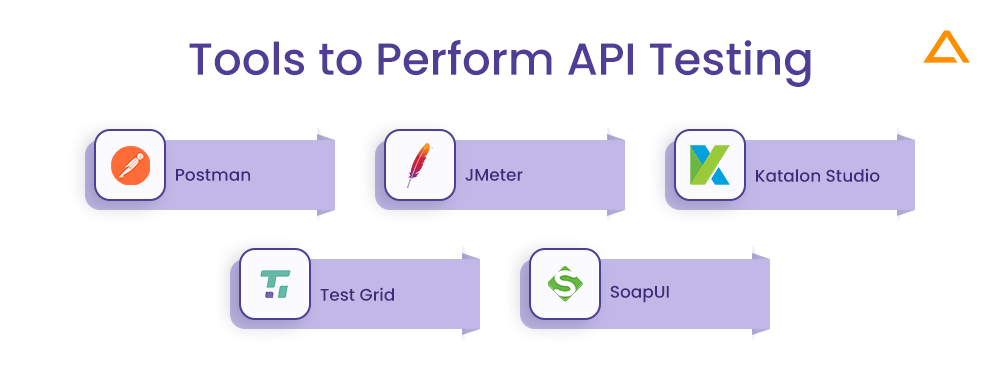
Postman

Postman is an API development and consumption platform. It streamlines cooperation and simplifies each phase of the API lifecycle, allowing you to create APIs faster and better. It started as a Google Chrome extension. On-premise Postman API testing for both Mac and Windows is now available.
Features
- Available for both automated & exploratory testing
- Offers rich interface
- Able to run on Linux, Mac, Windows
- Supports various integrations such as Raml & Swagger formats
- Offers rich interface
- Easy-to-use REST client
Pricing
There are four plans available
- Free – $0
- Basic – $12 per user/month, billed annually, $15 per user/month, billed monthly
- Professional – $29 per user/month, billed annually, $36 per user/month, billed monthly
- Enterprise – $99 per user/month, billed annually
JMeter

Although being created for performance testing, Apache JMeter is commonly used for functional API testing. JMeter includes all the functionality you might need to test API and several other features that can enhance your API testing efforts.
Features
- Test results are cached and replayed offline
- Work with CSV files in an automated manner, allowing the team to build unique parameter values for API testing quickly
- Because of JMeter and Jenkins connectors, API tests may be included in the CI pipeline
- Static and dynamic resource performance tests are also possible with this tool
Pricing: Free
Katalon Studio

Katalon Studio is the most comprehensive and reliable automated testing solution available. Katalon is also one of the prominent test automation solutions for API, Web, and mobile applications, having been named a Gartner peer insight Customers’ Choice for Software Test Automation for three consecutive years.
Features
- Easy to use UI
- Productivity-centric features for all sizes
- Supports REST, SSL client certificates, and SOAP requests
- Native CI/CD Integration
- Data-driven testing methods
- Better coverage and reliability
Pricing
- Free: $0
- Studio Enterprise: $170 /licence/month
- Runtime Engine: $135 /license/month
Test Grid

Test Grid is the next API testing option. It’s a Web-based API development package with a simple user interface. You can enlist the help of your business team to create and execute test cases without any prior programming experience. This results in a 70 percent faster API process than typical APIs.
Features
- Deeper Assertations
- Ease to use of API
- Supports detailed report
- Transaction monitoring
- Scriptless testing
- CI/CD tools integration
Pricing
- API test Module: $829/license/yearly
- API Performance Module: $6,769/license/yearly
- API Virtualization Module: $1,270/license/yearly
SOAP UI

SoapUI is a popular API testing tool. API testing is the primary focus of this headless functional testing tool. Users may quickly test REST, SOAP APIs, and Web Services with this API tester.
Features
- Easy to Create Tests
- Data-driven testing
- Script Reusability
- Effortless Integration
Pricing
- API test Module: $829/license/yearly
- API Performance Module: $6,769/license/yearly
- API Virtualization Module: $1,270/license/yearly
API Testing Best Practices
Here are the top ten guidelines you need to remember during API testing before you go off and start testing APIs on your own:
- First, check for expected outcomes
- Using a set of API load tests, place the system under strain
- Failure is a test. Make sure you know how your API will fail before you use it. Ensure that the API fails gracefully and consistently
- Sort the test cases into groups based on the test type
- Make API function calls a priority so that testers can test them quickly and efficiently
- By isolating the tests as much as possible, you can limit the number of variables that can be tested
- By putting as much as possible at it, discover how it manages unexpected problems and loads
- Carry out a well-thought-out call-sequencing procedure
- Make test cases for all conceivable API input combinations to ensure thorough test coverage
- Whenever possible, automate
Wrapping Up!
This concludes the blog; hopefully, you now have a better understanding of API testing and why it is so crucial. In addition, you’ll learn how to choose the best API testing tools and how to use them properly. API plays a critical role when viewed from both the software and business perspectives. Depending on your team’s requirements, all API test tools operate well and are excellent choices.
have a unique app Idea?
Hire Certified Developers To Build Robust Feature, Rich App And Websites.
Three steps make up the API testing process:
- Send the request along with the required input data
- Obtain a response with output data
- Check to see if the response was as intended in the requirement
FAQs
- Send the request along with the required input data
- Obtain a response with output data
- Check to see if the response was as intended in the requirement
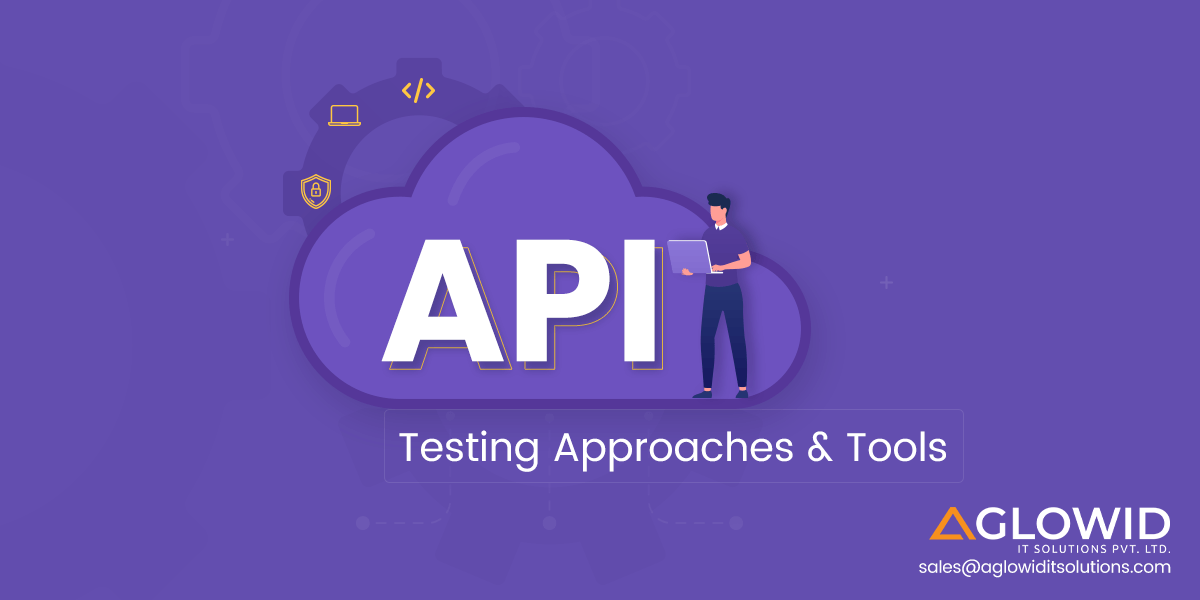




 Say
Say